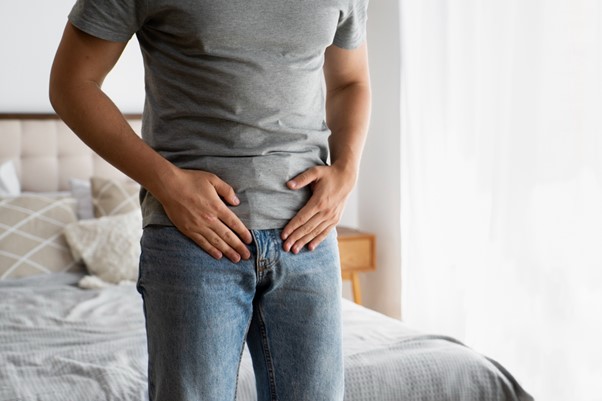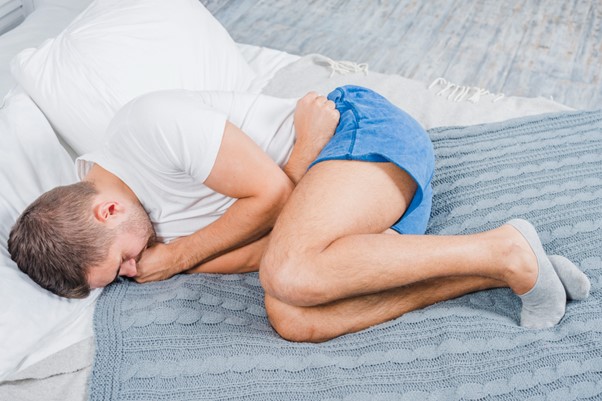Health
How Pudendal Nerve in Male Impacts Pelvic Health
Published
5 days agoon
By
Admin
Pelvic health in men is often overlooked, yet it plays an essential role in overall well-being, mobility, and quality of life. One of the most important but less frequently discussed elements of pelvic function is the pudendal nerve in male anatomy. This nerve is central to sensation, continence, and sexual function, making it vital for both daily comfort and intimate health.
When the pudendal nerve is compromised—whether through injury, compression, or surgery—it can lead to significant health concerns, including pain, urinary or bowel issues, and sexual dysfunction. For men recovering from conditions such as prostate cancer rehab, understanding how the pudendal nerve functions and impacts pelvic health is particularly important.
This article explores the role of the pudendal nerve in male anatomy, the problems that can arise when it is affected, and the steps men can take to protect and restore pelvic health.
Understanding the Pudendal Nerve
Location and Function
The pudendal nerve originates in the sacral region of the spinal cord (S2-S4). It runs through the pelvic floor, branching out to supply sensation to the perineum, penis, and anus. It also controls key muscles that regulate urination and bowel movements.
Key Roles of the Pudendal Nerve in Male Pelvic Health
- Sensation: Provides feeling in the genitals and perineal area.
- Continence: Controls the external anal sphincter and urethral sphincter, which are essential for bladder and bowel control.
- Sexual Function: Plays a role in erection, ejaculation, and overall sexual response.
The pudendal nerve is therefore critical to multiple aspects of pelvic health, combining sensory and motor functions that directly affect a man’s quality of life.
Common Issues Affecting the Pudendal Nerve
Pudendal Neuralgia

Pudendal neuralgia is a chronic pain condition caused by irritation or entrapment of the pudendal nerve. Men with this condition may experience:
- Burning or stabbing pain in the perineum or genital area
- Pain during sitting, which eases when standing
- Numbness or tingling in the pelvic floor
- Erectile dysfunction or painful ejaculation
Nerve Damage After Surgery
Men undergoing prostate surgery, especially for prostate cancer, are at risk of pudendal nerve irritation or damage. This can lead to temporary or permanent issues with continence and sexual function. This is why prostate cancer rehab often includes targeted pelvic floor therapy to retrain and strengthen muscles influenced by the pudendal nerve.
Trauma and Lifestyle Factors
Injuries from cycling, prolonged sitting, or pelvic trauma can also irritate the pudendal nerve. Lifestyle habits, such as poor posture or repetitive pressure on the pelvic floor, may worsen symptoms.
Connection Between Pudendal Nerve and Prostate Cancer Rehab

Why Rehabilitation is Essential
Prostate cancer treatment, including surgery or radiation therapy, can affect pelvic nerves and muscles. This often leads to incontinence, erectile dysfunction, and pelvic discomfort. The pudendal nerve, being central to pelvic control, becomes a focus of rehabilitation strategies.
Rehabilitation Techniques
- Pelvic Floor Exercises: Strengthening muscles under pudendal nerve control helps restore continence.
- Biofeedback Therapy: Provides patients with real-time information on muscle activity, supporting better control.
- Neuromodulation Treatments: In cases of severe pudendal nerve dysfunction, electrical stimulation may help regulate signals.
- Gradual Return to Activity: Tailored rehab programs guide men in resuming normal physical activity without straining the pelvic floor.
By targeting the pudendal nerve’s role in pelvic health, rehab programs help men regain confidence and independence after prostate cancer treatment.
Symptoms That Indicate Pudendal Nerve Dysfunction
Men should seek medical assessment if they experience:
- Persistent pelvic or genital pain
- Numbness or altered sensation in the perineum
- Difficulty controlling bladder or bowel movements
- Erectile dysfunction not explained by hormonal or vascular causes
Early recognition of pudendal nerve issues allows for more effective management and reduces the risk of long-term complications.
Protecting Pudendal Nerve Health
Posture and Sitting Habits
Using cushions designed to relieve perineal pressure, adjusting seating positions, and avoiding long periods of sitting can reduce nerve compression.
Safe Exercise Choices
High-impact or repetitive pressure activities, such as long-distance cycling, can irritate the pudendal nerve. Low-impact exercises like swimming or walking are often better alternatives.
Professional Support
Consulting a physiotherapist specialising in men’s pelvic health can provide tailored strategies for protecting pudendal nerve function.
Post-Surgical Care
For men recovering from prostate cancer, following a structured prostate cancer rehab plan is key. These programs not only strengthen the pelvic floor but also help retrain the pudendal nerve pathways to restore normal function.
Long-Term Impact of Pudendal Nerve Issues
If left untreated, pudendal nerve dysfunction can lead to chronic pain and ongoing issues with continence and sexual health. This can affect emotional well-being, relationships, and overall quality of life. Addressing concerns early with medical and therapeutic support reduces the risk of complications and improves long-term outcomes.
Final Thoughts
The pudendal nerve in male anatomy plays a vital role in maintaining pelvic health, influencing continence, sensation, and sexual function. When compromised—whether by injury, lifestyle factors, or surgery—the consequences can be significant.
For men recovering from prostate surgery, focused prostate cancer rehab is essential to protect and restore pudendal nerve function. Through pelvic floor exercises, targeted therapies, and lifestyle adjustments, men can significantly improve their quality of life after treatment.
By understanding the importance of the pudendal nerve and taking proactive steps to maintain pelvic health, men can support both physical recovery and long-term well-being.

Debt Consolidation Success Stories: Real People, Real Results

Understanding the Meaning and Modern Appeal of the Thobe

Unlocking Operational Flexibility with Forklift Rentals

Why Hiring a Painting Company is the Best Choice for Your Painting Needs

The Complete Guide to Gutter Systems: Protecting Your Home from Water Damage

How to Choose the Right Movers for a Stress-Free Relocation

Understanding Foundation Repair: Causes, Signs, and Solutions

Experience the Thrill of the Game with Fan Travel Packages

Understanding Private Provider Inspections: A Faster Path to Project Approval

Who Is Katianna Stoermer Coleman? Zendaya’s Sister You Never Hear About

Curious About JOI Database? Read This First Before You Click Anything

Should You Use Wooflix in 2025? Honest Review and Best Alternatives

ECMISS: The Intelligent System Behind Smarter Everything

Where Is Noelle Watters Now? Jesse Watters’ Ex-Wife’s Life After Divorce

Jacqueline Bernice Mitchell: The Inspiring Story of Jerry Rice’s Ex-Wife

Is F2Movies Safe to Use? The Truth Nobody Tells You

Who Is Marlene Knaus? The Untold Story of Niki Lauda’s First Wife

Who Is Dorothée Lepère?: All About François-Henri Pinault’s First Wife

Who Is Raquel Pedraza? Meet Taylor Fritz’s Tennis Star Ex-Wife

Swizz Beatz Net Worth 2025: How Rich Is Alicia Keys’ Husband Now?

Debt Consolidation Success Stories: Real People, Real Results

Understanding the Meaning and Modern Appeal of the Thobe

Unlocking Operational Flexibility with Forklift Rentals

Why Hiring a Painting Company is the Best Choice for Your Painting Needs

The Complete Guide to Gutter Systems: Protecting Your Home from Water Damage

How to Choose the Right Movers for a Stress-Free Relocation

Understanding Foundation Repair: Causes, Signs, and Solutions

Experience the Thrill of the Game with Fan Travel Packages

Understanding Private Provider Inspections: A Faster Path to Project Approval

Who Is Katianna Stoermer Coleman? Zendaya’s Sister You Never Hear About
Categories
Trending
-

 Entertainment3 months ago
Entertainment3 months agoCurious About JOI Database? Read This First Before You Click Anything
-

 Entertainment3 months ago
Entertainment3 months agoShould You Use Wooflix in 2025? Honest Review and Best Alternatives
-

 Technology3 months ago
Technology3 months agoECMISS: The Intelligent System Behind Smarter Everything
-

 Celebrity2 months ago
Celebrity2 months agoWhere Is Noelle Watters Now? Jesse Watters’ Ex-Wife’s Life After Divorce
